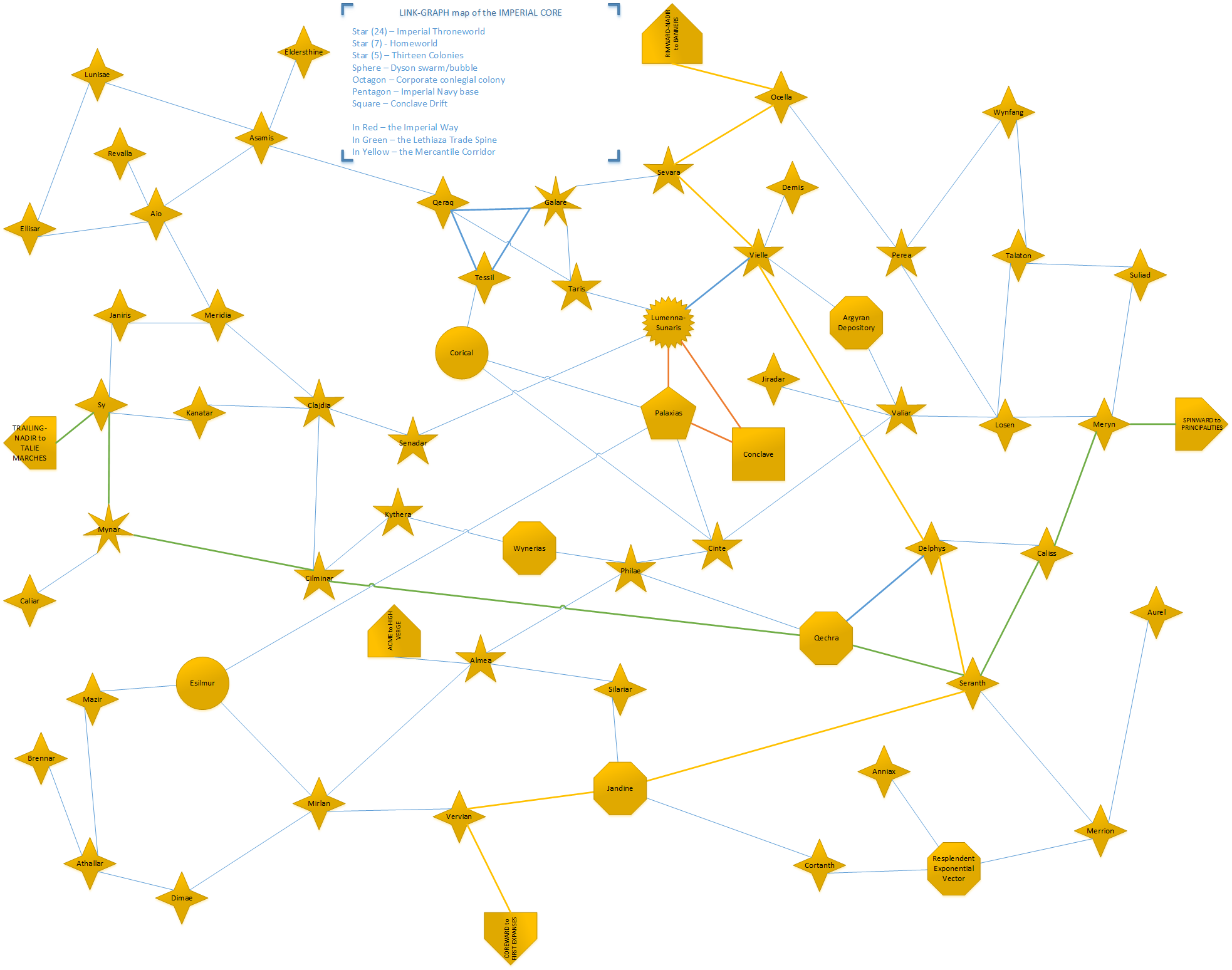So, regarding those “Ethnographical Questionnaire” chunks I have posted occasionally – I conclude that I’m going to start posting smaller chunks, on the grounds that (a) it takes me so damn long to finish a section, and (b) smaller and more often is better than giant and occasional. So, that said, here’s a new piece:
What are the most common domesticated animals here? And what are they domesticated for?
This, of course, varies quite radically by planet – so here’s the original most common domesticated animals of Eliéra, the eldraeic homeworld:
- The adhaïc [honeybee] – hive insects, greenlife, kept for their honey, wax, and pollination services.
- The bandal – a canid greenlife species, or more accurately, another subspecies of Canis lupus, differentiated from the Earth dog by virtue of having spent its domestication mostly being bred for smart, rather than obedient, being expected to operate more as junior partners in civilization than tools (including, say, the ability to operate clockwork automata in at least a limited fashion) in many and varied roles; distinguished by a higher forehead and more manipulative forepaws. Also associated with Tárvalén, the Binder, Eikone of Loyalty (see myth).
- The cerrúr – a four-horned hexapedal browsing bluelife animal, used for riding.
- The certárúr – a four-horned (with stunted horns) hexapedal browsing bluelife animal, used for riding and as a draft animal; also for leather.
- The chiashaïc [silk-spider] – a bluelife pseudo-arachnid, used for fiber.
- The ékaláman – a hexapedal flying carnivorous bluelife reptile with a mid-wing, used for hunting, as we do raptors.
- The élirúr [dormouse] – a greenlife rodent, used for meat.
- The fírastal – a slightly larger greenlife relative of the Earth cat, kept for pest control and occasional hunting.
- The hasérúr – a hexapedal browsing bluelife animal used for meat and milk.
- The kuléra – a four-winged bluelife bird, used as a scout and messenger.
- The líhasúr – a quadrupedal rooting greenlife animal, used for meat; a close relative of the Earth pig.
- The nekhalyef – a quadrupedal grazing greenlife animal, used for meat, milk, and fiber; a close relative of the Earth sheep.
- The pengál – a bluelife pseudoserpent, kept for pest control.
- The reshkef – a hexapedal browsing bluelife animal, used for meat, milk, and fiber.
- The quebérúr – a quadrupedal grazing greenlife animal, used for meat and milk; a close relative of the Earth bison.
- The sevesúr – a two-winged greenlife game bird, used for meat and eggs.
- The tiryef – a large flightless bluelife bird, used for meat.
- Underwater, the ííche [dolphins – well, technically, it means “cetaceans”, but in this specific case; greenlife] and cúlnó [octopodes; greenlife], which occupy a similar niche Below as the bandal do on the surface. Also, various farmed fish.
Which animals are likely to be pets? Which ones won’t be?
The most commonly kept as pets – but for values of pets which usually involves working (which, in their terms, includes “for companionship”), rather than simple ornamentation, since the eldrae have ideas about dignity and what they shouldn’t expect any animal smart enough to be a pet to do – would be the bandal, the firastal, and the kuléra; underwater, and to a lesser degree in space, some species of cúlnó are also popular.
As for which won’t – anything that’s too dangerous or insanitary, as usual, plus anything not smart enough to hold the interest of their keepers. With the possible exceptions of aviary birds, aquarium fish, and butterflies – but then, they are ornamental.

